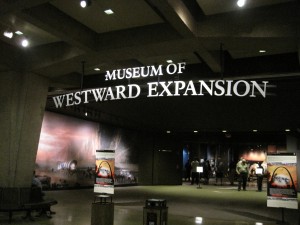
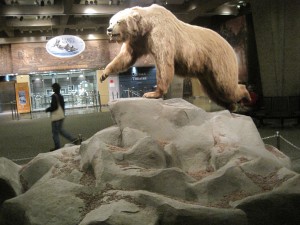
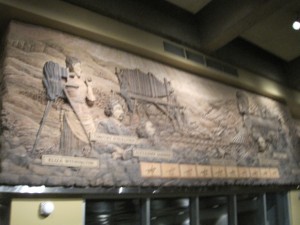
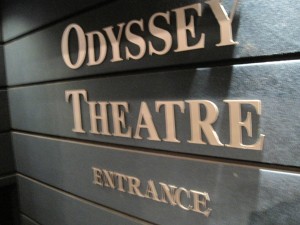
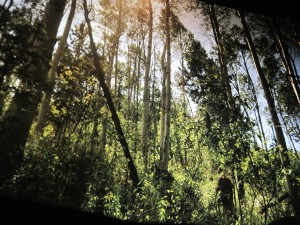
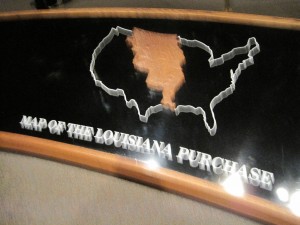
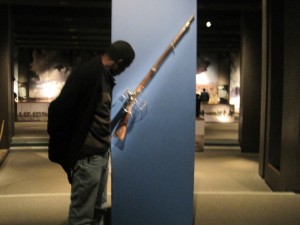
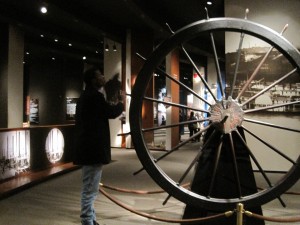
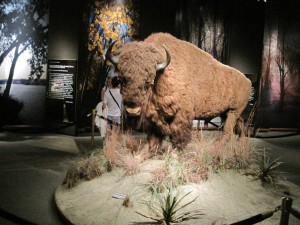
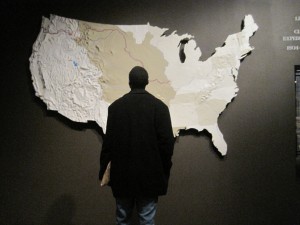
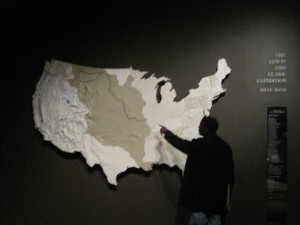
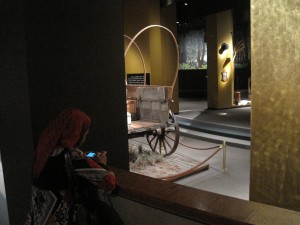
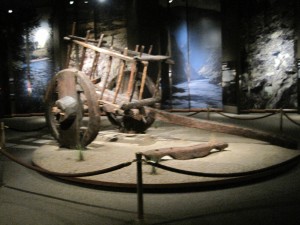
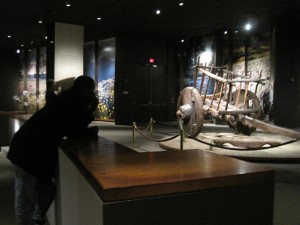
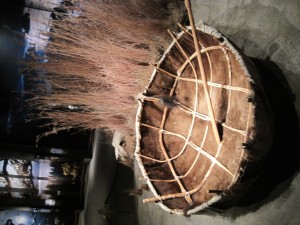
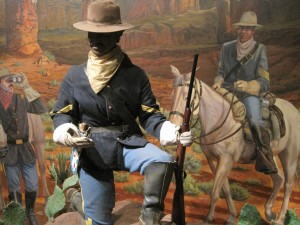
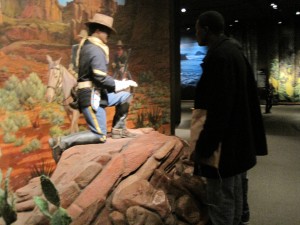
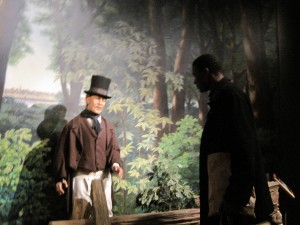
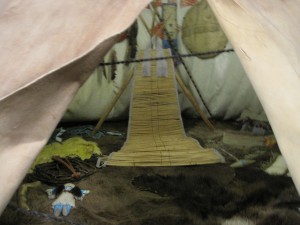
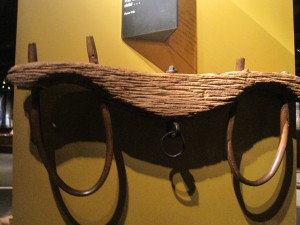
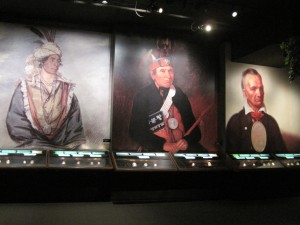
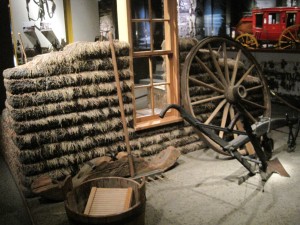 The Jefferson Memorial in St. Louis comprises of more than just the Gateway Arch. Beneath the large steel architectural wonder that is the Arch is the Odyssey Theatre and the Museum of Westward Expansion. It was in the theatre where we saw the movie of the recreated account of the Lewis and Clark expedition. The Museum of Westward Expansion has real-life replicas of things used during the expedition, things obtained from the native Indians, guns, carriages, animals, maps, and animated robots dressed and speaking like the characters they represent.
The Jefferson Memorial in St. Louis comprises of more than just the Gateway Arch. Beneath the large steel architectural wonder that is the Arch is the Odyssey Theatre and the Museum of Westward Expansion. It was in the theatre where we saw the movie of the recreated account of the Lewis and Clark expedition. The Museum of Westward Expansion has real-life replicas of things used during the expedition, things obtained from the native Indians, guns, carriages, animals, maps, and animated robots dressed and speaking like the characters they represent.
The way the Indians lost their land to the invading Europeans was a rather curious one – quite similar to the African experience. The white Americans approached them with a prepared text from the President, informing the awed natives that their land now belonged to an entity called the United States of America, and that more white people would soon come to displace them, and settle them in new places. To seal the “treaty”, the natives were given silver and gold coins that were said to represent coming in peace. The truth of the matter however was that the natives didn’t understand what the invaders were saying. All they wanted was to live in peace, so they agreed to everything without making sense of it. They probably thought that their guests were just going to settle among them in peace. Big mistake. By the time they realized it, it was too late. The land belonged to someone else, and they had to go elsewhere hungry, homeless and dispersed from their environment and means of livelihood. How messed up is that?
The African experience was different only in the fact that we were not totally annihilated, and after a while, the land was given back – except of course in places like South Africa, Kenya, Zimbabwe and some parts of southern Africa. The Native American Indians were not so lucky. It must have been the presence of malaria that made Africa such an uninhabitable place for the “visitors”, that after about a hundred years of exploitation, the invaders were as willing to go away as the Africans were willing to have them leave. But here is the similarity: artifacts, mineral resources, labour and artworks belonging to the great kingdoms were – mostly forcibly – taken over and given to the King, the State or the President as the case may be. It ceased to belong to the original owners from the time they however unwittingly agreed to accept the new folks into their midst.
Real, real curious, that word: civilization and enlightenment. If you asked the people of the great old kingdom of Benin, they would gladly give back (European) “civilization” to have back the original casts of their famous artworks now residing in the British Museum in London or the people of Egypt the great bust of their famous kings now resting in German museums. It’s a time like this when this saying rings most true: “As long as the deer family is unable able tell its story, the history of the hunt will always glorify the hunter.” – an old African saying.
.
9 Comments to Gateway To The West so far. (RSS Feeds for comments in this post)